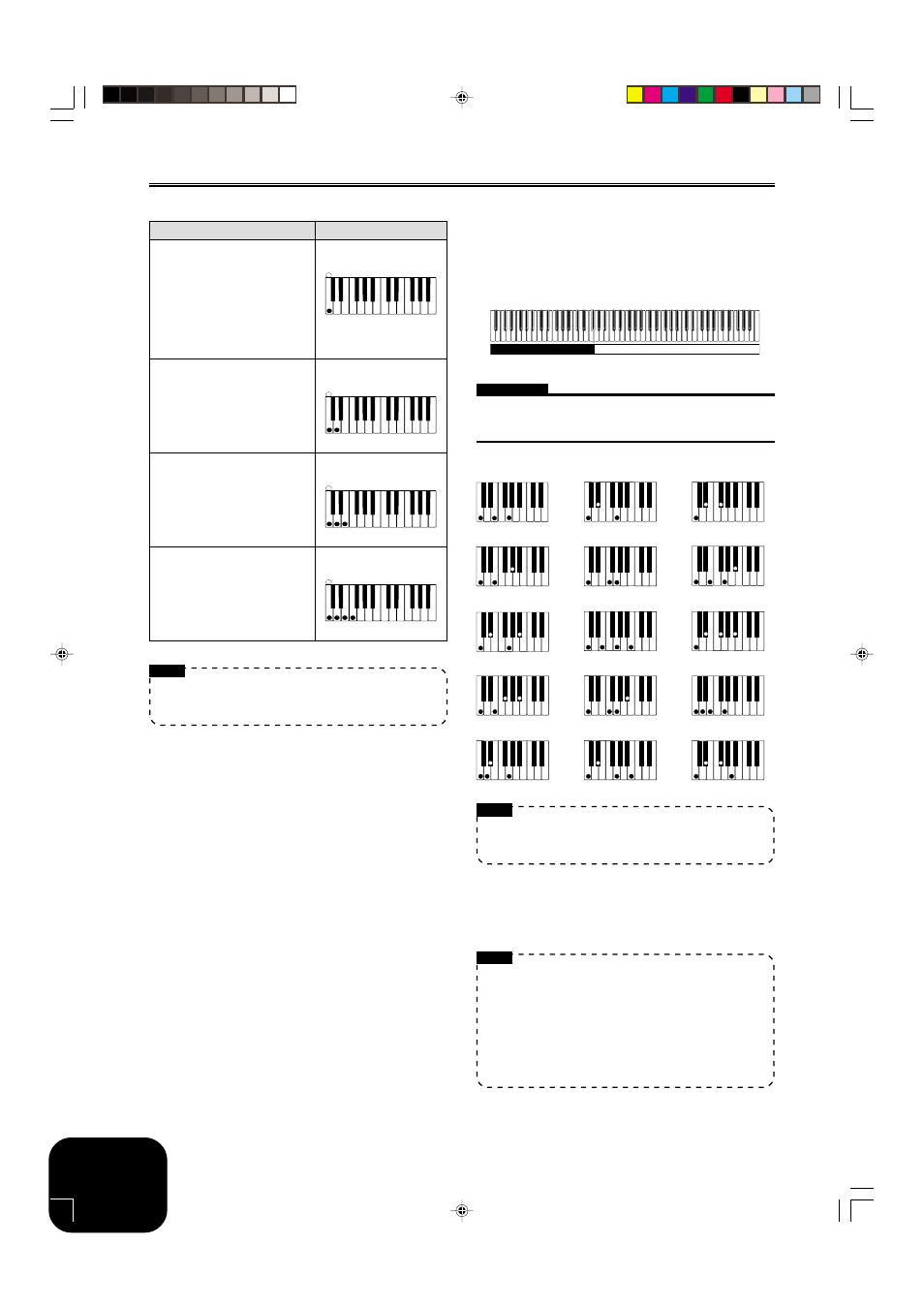E-12, Playing a rhythm – Casio AP-80R User Manual
Page 14

E-12
Playing a Rhythm
429A-E-014A
Chord Type
Major Chords
Pressing a single accompaniment
area key in the CASIO CHORD
mode will play the major chord
whose name is marked above the
key. All of the accompaniment
area keys that are marked with the
same chord name play exactly the
same chord.
Minor Chords
To play a minor chord, press the
accompaniment area key that
corresponds to the major chord,
while also pressing one other
accompaniment area key to the
right.
Seventh Chords
To play a seventh chord, press the
accompaniment area key that
corresponds to the major chord,
while also pressing two other
accompaniment area keys to the
right.
Minor Seventh Chords
To play a minor seventh chord,
press the accompaniment area key
that corresponds to the major
chord, while also pressing three
other accompaniment area keys to
the right.
NOTE
• When playing a minor, seventh, or minor seventh chord, it
makes no different whether the additional keys you press
are black or white.
Example
C (C major)
C C DE
F
#
#
E
F GA A
B
B
C C DE
F
E
#
Cm (C minor)
C C DE
F
#
#
E
F GA A
B
B
C C DE
F
E
#
C7 (C 7th)
C C DE
F
#
#
E
F GA A
B
B
C C DE
F
E
#
Cm7 (C minor 7th)
C C DE
F
#
#
E
F GA A
B
B
C C DE
F
E
#
■ FINGERED
In the FINGERED mode, you play standard chord fingerings in
the accompaniment area to play chords. To finger a C chord, for
example, you would press the C-E-G keys.
FINGERED Mode Keyboard
IMPORTANT!
• In the FINGERED mode, the keys in the accompaniment area of
the keyboard operate as “chord switches” only. You cannot use
the keys in this area to play notes.
Accompaniment Area
Melody Area
NOTE
• See the “Fingered Chord Chart” on page A-6 for information
about fingering chords with other roots in the accompaniment
area.
*
1: Inverted fingerings are not supported for these chords. The
lowest note fingered is used as the root. See the NOTE below
for more information about inverted chords.
*
2: For these chords, the same chord is specified even if the G fifth
is not fingered.
NOTE
• Except for the chords whose names have *1 after them in the
above examples, you can also use inverted fingerings for
chords. This means, for example, that you could use the
fingering E-G-C or G-C-E instead of C-E-G for C major.
• Except for the chords whose names have *2 after them in the
above examples, you need to press all of the indicated keys
in order to finger a chord. Failure to include even a single
note may produce a chord that is different from the one you
want.
C
Cm
Cdim
Caug *
1
Csus4
C7 *
2
Cm7 *
2
Cmaj7 *
2
Cm7
5
C7
5
*
1
C7sus4
Cadd9
Cmadd9
CmM7 *
2
Cdim7 *
1
AP80R_e_01-16.p65
04.8.26, 3:44 PM
12
